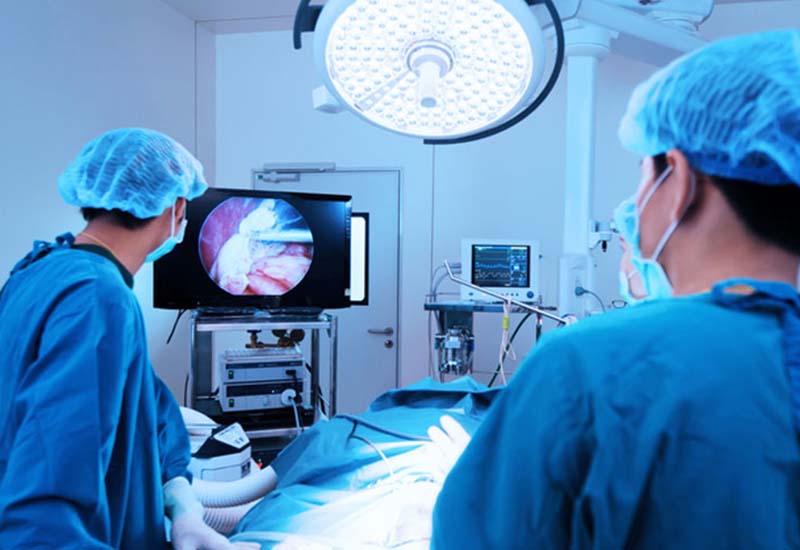Laparoscopic Hysterectomy
What is Hysterectomy?
Hysterectomy is the surgical removal of the uterus, which provides relief from troublesome symptoms such as pelvic pain and heavy irregular periods. It is the second most common surgery among women after caesarean section delivery.
Hysterectomy is a common gynaecological procedure that involves the removal of the uterus through an incision. In some patient, Hysterectomy may also include the removal of ovaries, cervix, or fallopian tubes.
What is Laparoscopic Hysterectomy?
A laparoscopic hysterectomy is a surgery that is undertaken to removal the uterus or womb. Removal of the uterus means that you no longer can conceive. Apart from the uterus, the ovaries, and fallopian tubes may also be removed, and this surgery is called as salpingo-oophorectomy.
How is Laparoscopic Hysterectomy Performed?
A laparoscopic hysterectomy surgery requires a small or half-inch-long incision in your abdomen. The pelvic region can be clearly seen by inserting the laparoscope (a tube with a light source and a tiny camera that allows your surgeon to see your internal organs) through these incisions. Some instruments are then inserted through the other small incisions in your abdomen or vagina, to remove your womb, the cervix and any other parts of your reproductive system.
Laparoscopic Hysterectomy surgery offers several benefits to the patient like :
- Only 1 day hospitalization.
- Can return to work in 2-3 days.
- Minimal blood lost.
- No Blood Transfusion
- Minimal or No pain
Presence of following factors enables the doctor to confirm a laparoscopic hysterectomy for you :
- Presence of fibroids
- Infected reproductive organs
- Endometriosis
- Heavy bleeding
Following things go into preparation for undergoing a laparoscopic hysterectomy :
- High levels of fitness
- Optimum weight
- Blood tests



